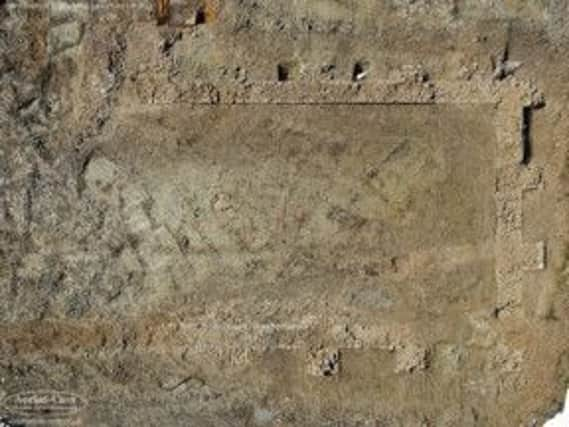Medieval tithe barn unearthed on land in Southam set for development


Archaeologists have discovered what they believe to be a Medieval ‘tithe barn’ - as well as a Roman ditch - on land in Little Park, where Orbit Homes (2020) Ltd are about to build an ‘independent living’ complex and library.
A team led by Tom Vaughan, project manager for Worcestershire Archive and Archaeology Service, was asked to carry out a routine evaluation of the site last year - and they found what Mr Vaughan describes as “a very substantial stone structure”, measuring about 10 by 18m, which appeared to be of a Medieval date.
Advertisement
Hide AdAdvertisement
Hide AdHe said: “We then did a full-scale excavation and uncovered a much larger extent of this stone building, made up of limestone foundations with buttresses.
“We also found charred grain from the post-Medieval period, which fits in with it being a tithe barn.”
Tithe barns were used to store the ‘tithe’ - a tenth of a farmer’s produce - which was to be given to the church. They would be filled with whatever crop the farmers had been growing, often wheat or barley.
Southam Manor was endowed to Coventry Priory in 1043, meaning it is likely that a large proportion of the tithes collected here would have been transported to Coventry for the use of the Priory.
Advertisement
Hide AdAdvertisement
Hide AdMr Vaughan said that he suspects that the barn would have been up to 40m long, but his team, who carried out the work alongside with experts from Warwickshire County Council, is restricted in the areas archaeologists can work on as they are only authorised to look at those that will be disturbed by the new developments.
He added: “Fifteen metres to the north of the barn, we found another limestone wall and then digging led to evidence that it was Roman. This suggests the site was probably a legal boundary.”
Andrew Mann, one of the archaeologists working on the site, said: “Tithe barns played a significant part in Medieval life and the Southam barn would have been an important and prominent building in the town. It is not known when or why the barn went out of use, but the earliest maps from the late 18th century show no buildings on this site.”
Southam is recorded in the Domesday survey of 1086 and there are records saying it existed in the late 10th century.
Mr Vaughan said that Orbit’s scheme would still go ahead, adding: “What we are doing is preservation by record.”